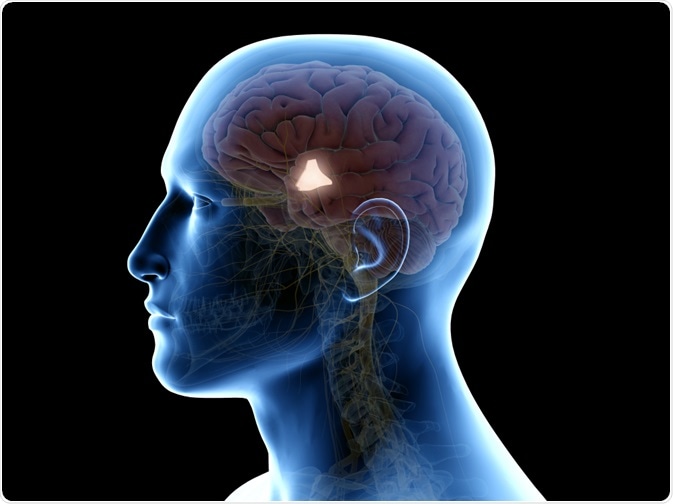What is the biology of stress and anxiety?
While a link between stress and anxiety seems plausible, the underlying biology is more complex than it appears.

Image Credit: Tero Vesalainen/Shutterstock.com
Stress
Stress can be defined as the response to a threat to an organism’s homeostasis; these threats or stressors can be physiological (low blood sugar, low blood volume) or “perceived” (external situations that can harm homeostasis).
The stress response induces physiological changes, for example, an increase in heart rate and breathing, as well as tensing of the muscles. This physiological response can lead to an emotional response, which is partially determined by how near the threat is anticipated to be.
Anxiety
Anxiety can be defined as a temporally diffused emotional state which is triggered by a perceived threatening situation, even though the likelihood of its occurrence may be low. Anxiety, therefore, is important in avoiding harmful situations.
However, this can become problematic if triggered by non-threatening situations or become constant. In the past, anxiety has been classified as “state anxiety” and “trait anxiety”, based on how long the anxiety state lasts.
State anxiety is acute or occurs for a short time. This occurs when an individual is highly alert to anticipated threats, which can be triggered by stress. State anxiety not only serves to avoid situations that could potentially be dangerous but also to strengthen memories.
Trait anxiety, on the other hand, is chronic (long duration/recurrent). Here, an individual who has the predisposition will constantly become anxious or make them more likely to be constantly displaying state anxiety.
Therefore, these two states of anxiety are linked, and as such a situation that led to state anxiety can subsequently lead to trait anxiety.
What neurological mechanisms are involved in stress and anxiety?
What areas of the brain are involved?
Studies have identified several areas of the brain which are involved in both stress response and anxiety; this includes the hypothalamus, amygdala, prefrontal cortex, and brainstem nuclei.
The neural circuits behind stress and anxiety are mixed, therefore it is likely that there is a strong connection between these two states.

Image Credit: SciePro/Shutterstock.com
Stress and hypothalamic corticotropin neurons
The hypothalamus is thought to be involved in the physiological stress response, where information about the stress-inducing situation is received, then controls the autonomic nervous system, the endocrine system, and behavior.
Multiple studies have shown that hypothalamic corticotropin neurons have shown that these modulate behaviors linked to stress.
Emotional valence is the process by which situations are categorized, which determines how the individual will respond to the situation; for example, if a situation is deemed to be positive then the individual would approach the situation, but on the other hand, if a situation is deemed to be negative then the individual would seek to avoid the situation or become defensive against it.
Recently, it has been shown through various studies that hypothalamic corticotropin neurons respond differently to situations with positive or negative emotional valence; there is increased activity in response to situations with a negative emotional valence, with the opposite occurring in response to situations with a positive emotional valence.
Further, it was found that having a reward presented within a situation causing negative emotional valence was able to reduce the activation of the hypothalamic corticotropin neurons.
Emotional valence, the basolateral amygdala, and anxiety

Image Credit: CLIPAREA l Custom media/Shutterstock.com
Another area of focus on stress and anxiety is the basolateral amygdala, which has been extensively studied.
For patients suffering from anxiety, this emotional valence becomes tipped towards the negative side, so that situations which are not positive or negative are more likely to be deemed negative in these individuals; a study has shown that in individuals who display high trait anxiety were more likely to interpret a surprised expression negatively.
A key part of the brain involved in emotional valence is the basolateral amygdala, where sensory information is connected to areas involved in controlling behavior.
The locus coeruleus noradrenergic projection network is one such connection to the basolateral amygdala and is thought to be involved in the formation of an emotional response to stress and anxiety.
Acute stress activates the locus coeruleus noradrenergic projections, which then leads to an increase in behaviors linked to anxiety. Another process involving the locus coeruleus noradrenergic projections is the strengthening of memories; here, noradrenaline release due to stress allows the individual to be highly alert, so that memory consolidation is facilitated.
Other studies have shown that activation of basolateral amygdala neurons connecting with NAc neurons leads to reward-seeking, while those connecting with the central amygdala were shown to be linked to avoidance.
Further Reading